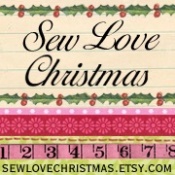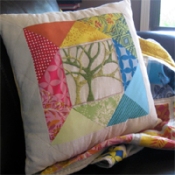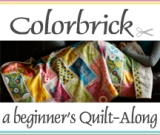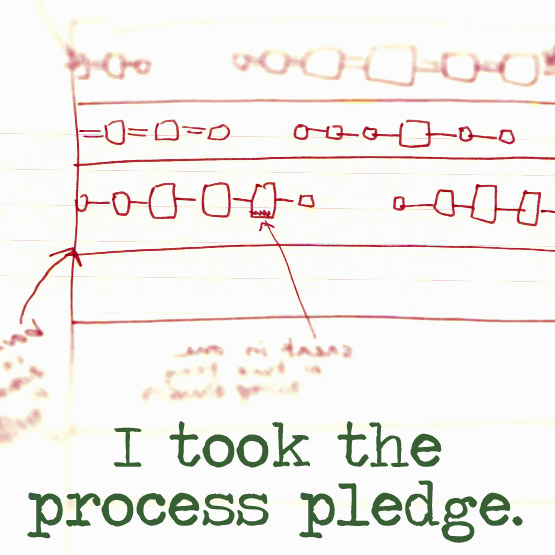It seems I have lots of friends who are just now dipping their toes into the stitching pool. We’ve been talking supplies lately, so here’s my list to get you started.
- Sewing Machine. Unless your mother-in-law’s machine can live with you for weeks at a time, don’t plan on borrowing. It just makes everything so much harder. Here’s a link to the affordable-with-extra’s sewing machine I purchased a year ago. It’s working out nicely!
- Sewing Machine Needles. Clearly you need needles (need needles, need needles!… sorry). All the options can be confusing. Buy a multi-pack with several sizes so you’ll be ready to work with different weight fabrics and a pack of size 12/80, which is a the size I use most. It doesn’t hurt to get extra so that you’re not stuck if a needle breaks.
- Thread. I recommend cotton thread because I love natural fibers. Coats & Clark Cotton is a fine start in black, white and natural. Wait to buy colors for a specific project. Higher quality threads like Gutermann are wise choices when you’re working on heirloom items like quilts. You do not want “hand quilting” thread for your sewing machine.
- Bobbins. These clear plastic disks fit in your sewing machine to feed the bobbin thread. Your machine likely came with a few, but you’ll want more. They’re cheap so buy a pack.
- Straight Pins. Have some fun picking out a cute set. Cheap and necessary. Woohoo!
- Tiny Scissors. You’ll be snipping threads all the time at the machine. A small pair of 4″ embroidery scissors stay out of the way and are easy to manage in tight places. Also a must for applique work.
- Big Scissors. Treat yourself to a new pair of quality 8″ fabric shears. These babies will be for fabric only and as such will remain quite sharp. Using your everyday scissors to cut out pattern pieces can backfire, allowing the fabric to bend and cut wrong. Your hands might also start to hate you.
- Marking Tools. Grab yourself a plain old pencil. Skip the disappearing fabric markers, as they don’t last long or go on easily. My favorite marking tool is the Clover Chaco Liner (last item on right in above picture). It smoothly dispenses chalk in a neat line. And, if I’m careful, the chalk is there as long as I need it, then brushes away.
- Seam Ripper. To undo those pesky mistakes that are totally not your fault (and the ones that are).
- Soft Measuring Tape. After accidentally melting my cheapo measuring tape with the iron, I invested in a retractable one. So far, it’s managed to dodge both iron and scissors.
Rotary Cutting Extras
A rotary cutter works like a pizza wheel to cut straight lines SO easily with a special mat and ruler. No one is going to tell you that you MUST start with a rotary cutter set up. But, you’ll never regret the day you get one! Cutting can be the most time-consuming part of sewing. So, if you have the cash, gear up with these babies from the beginning. P. S. If you are making a quilt, run-don’t-walk to get your rotary cutter setup!
- 45mm Rotary Cutter. Look for a cutter that seams comfortable, is self-retracting and has a locking mechanism for storage. My cutter is often on sale at big box stores like Joanns and Hancocks. No need to get extra blades just yet.
- 6 x 24″ Quilters Ruler. These clear, gridded rulers are designed to be used in conjunction with a rotary cutting mat to make getting cuts square a cinch. Start with a ruler that’s 6 x 24″. This is a key size! Once you start using it, you’ll see why.
- Rotary Cutting Mat. Be sure to buy a “self healing” rotary cutting mat. These are usually dark green and are definitely covered with inch grids and angles. Bigger is better, but these get quite expensive. Also, it should be stored flat so keep that in mind. I started with a 12 x 18″ mat, which works very well for most projects. I can cut everything on it, but I now use a larger mat for long cuts.
If you buy all these items on sale (which you should wait for – they come up pretty often) this rotary cutting setup would be about $40.
~Reference the whole series at Stitch Your Life.















